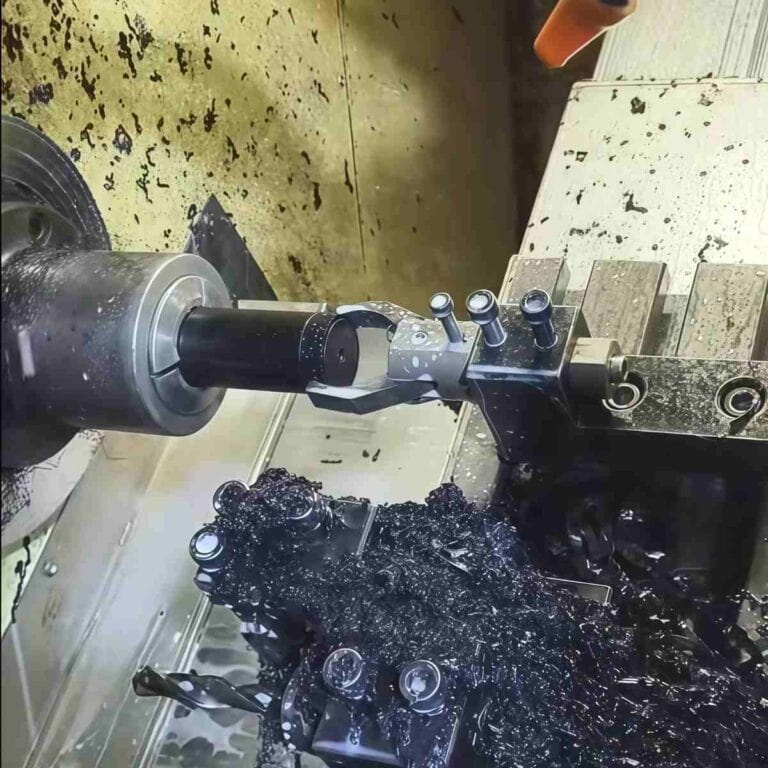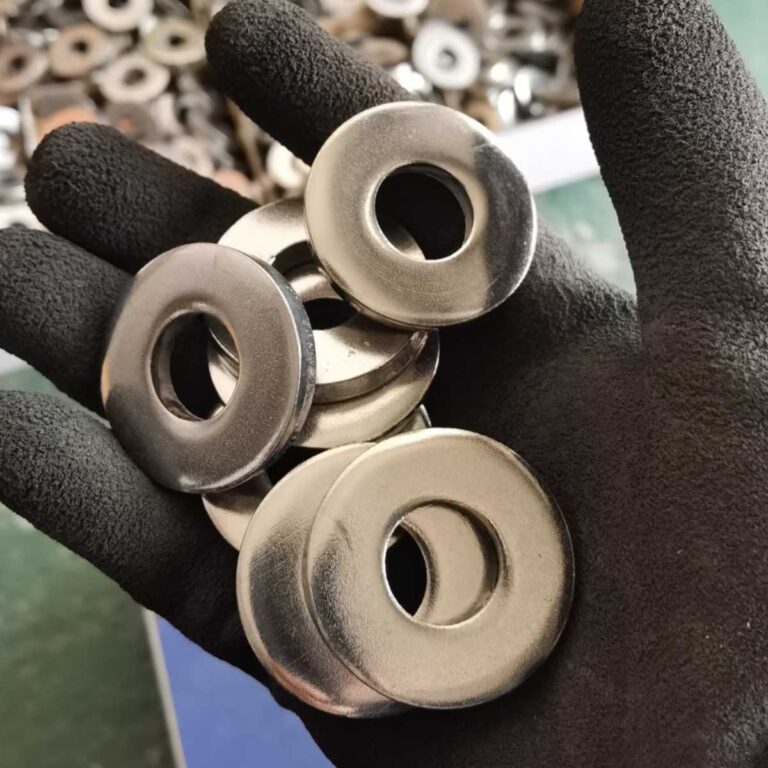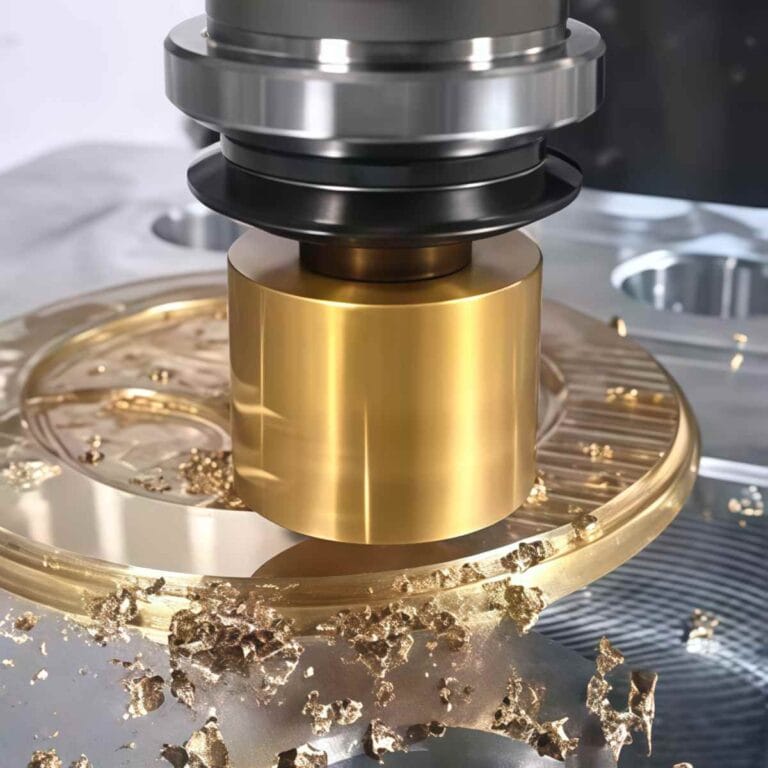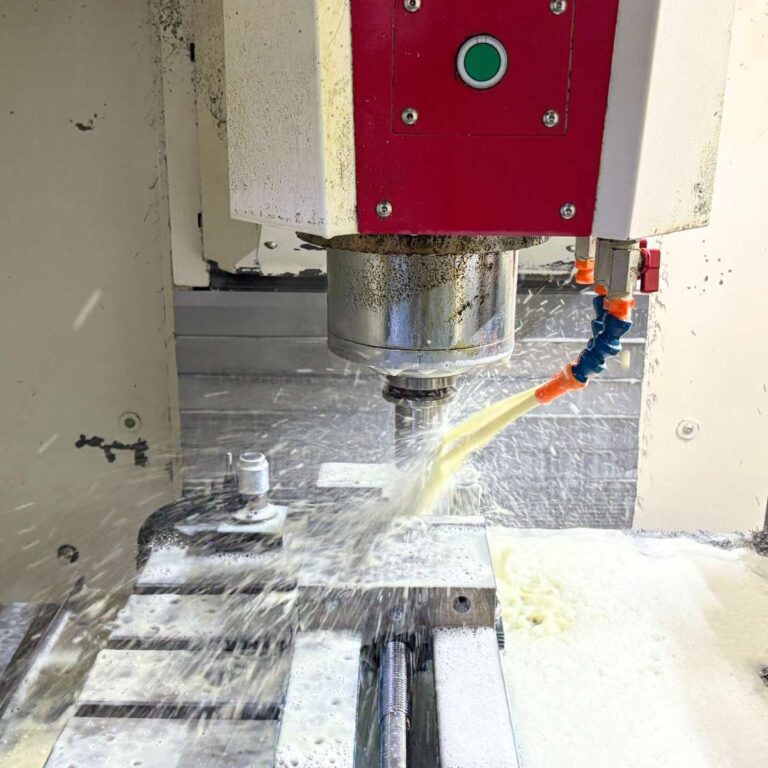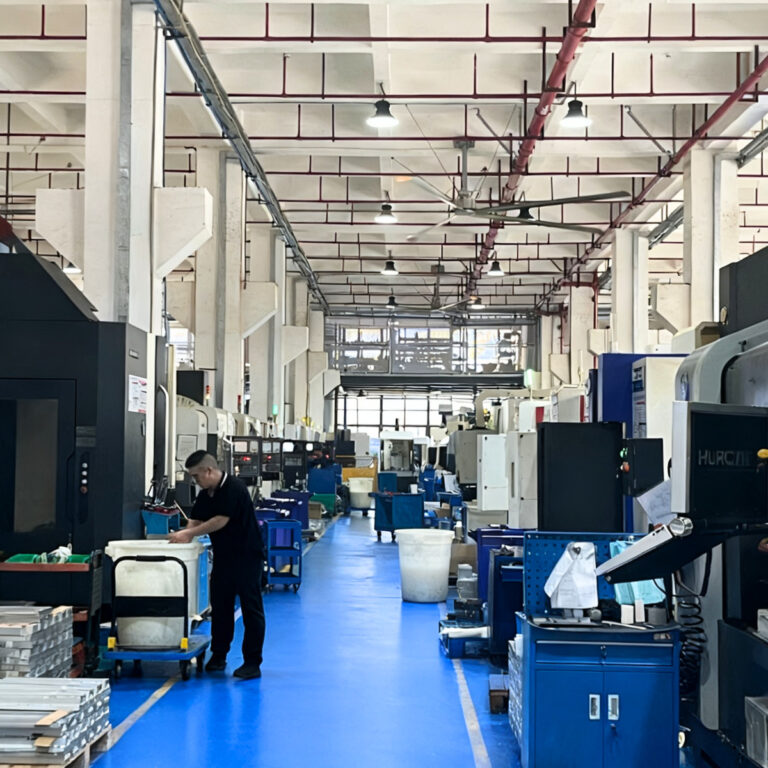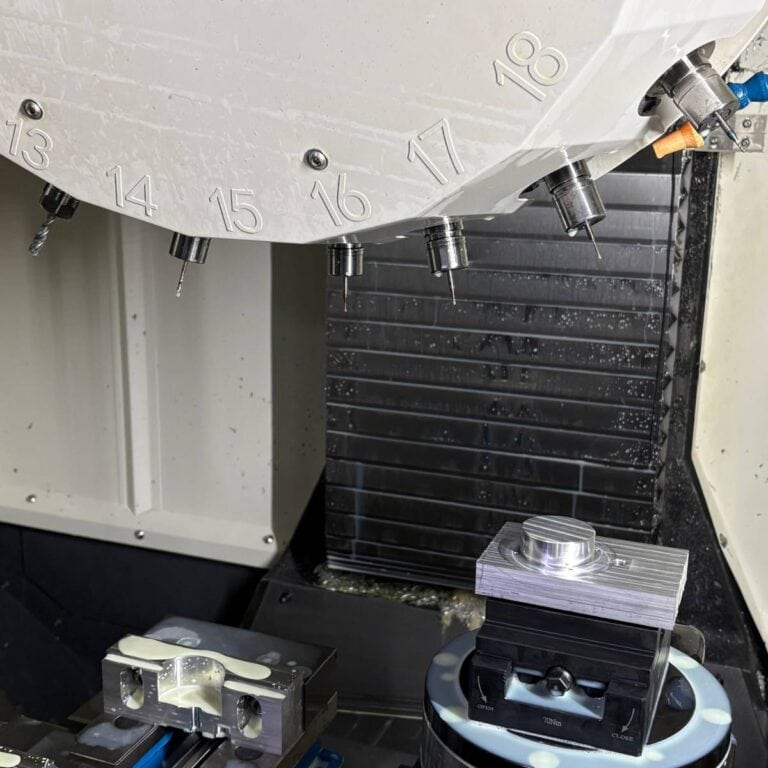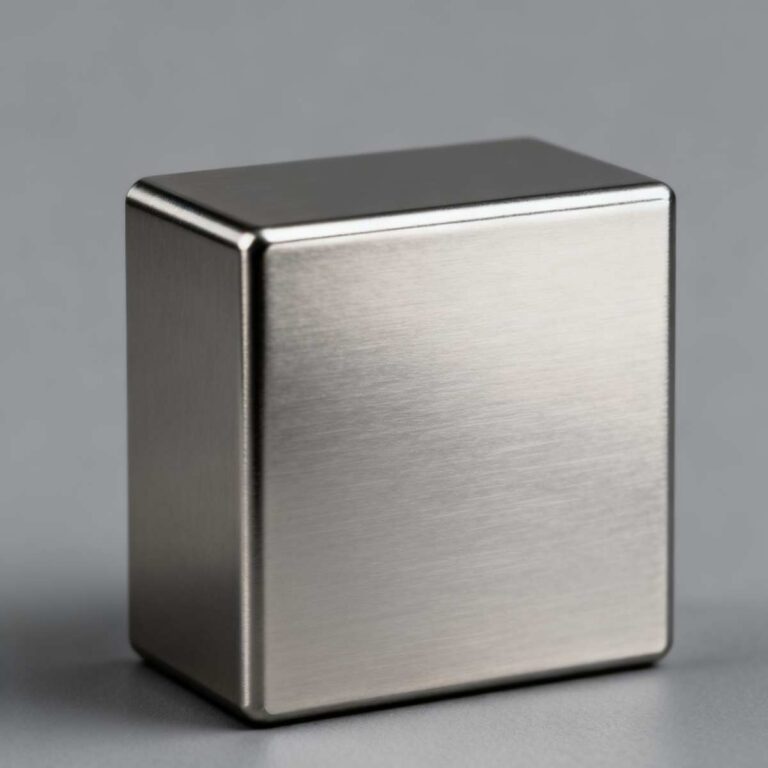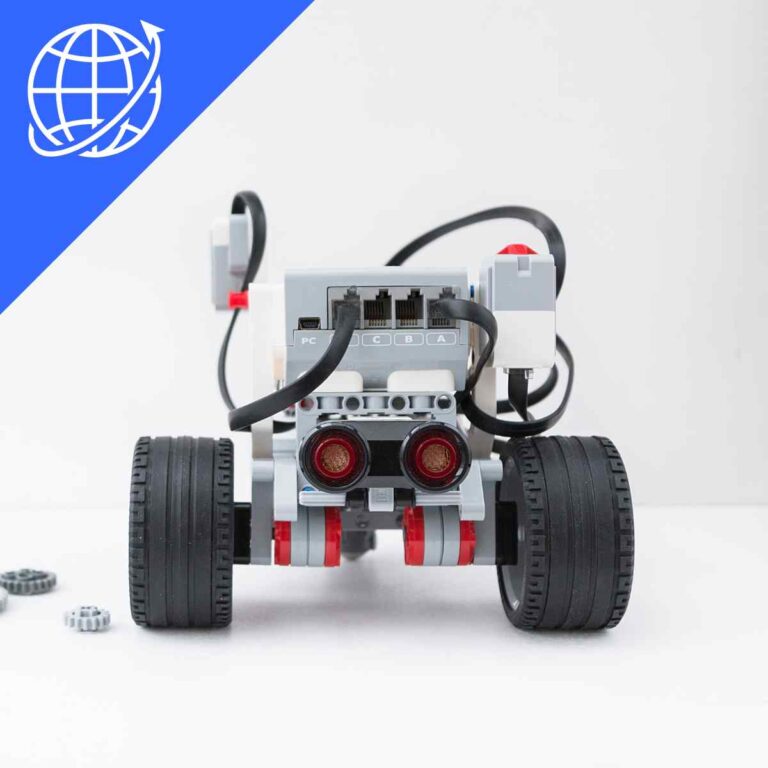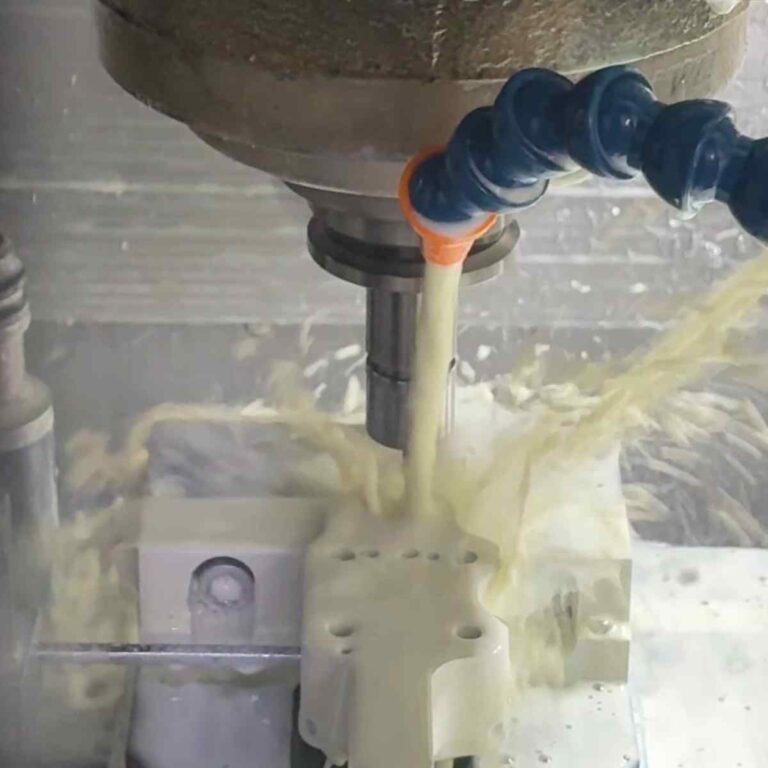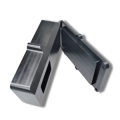CNC lathes are machine tools driven by computer numerical control systems, which can achieve high-precision automatic processing through programming instructions. CNC lathes play an important role in various industries, especially in precision manufacturing fields such as automobiles, aerospace, and medical. I will take you to understand the working principle, key components, types, application fields of CNC lathes and their differences from traditional lathes.
What Is Cnc Lathe Machine
A CNC lathe is a machine tool that automatically rotates and processes workpieces through a computer numerical control system. Unlike traditional manual lathes, the working process of a CNC lathe is controlled by programming instructions, which can accurately complete complex processing tasks. The widespread use of CNC lathes has changed the manufacturing industry, and it can achieve high-precision automated processing.
The history of CNC lathes can be traced back to the early 20th century. With the growth of industrial production needs, traditional manual lathes can no longer meet the requirements for accuracy and efficiency. With the development of computer technology, CNC lathes came into being. Through computer program control, CNC lathes are able to perform high-precision automated processing.
What Is The Working Principle Of CNC Lathe
The working principle of CNC lathe is to control the rotation of the workpiece and the precise movement of the cutting tool through a computer program. Unlike traditional manual lathes, CNC lathes use advanced computer numerical control technology (CNC), which can accurately control each cutting action through G-code instructions to achieve high-precision automated processing.
During the machining process, the workpiece is fixed on the spindle and rotates, while the cutting tool moves on the X-axis , Y-axis and Z- axis through computer control, so that the workpiece can be cut in multiple directions. One of the advantages of CNC lathes is that they can ensure cutting accuracy and machining efficiency through the control of two , three or even higher axes.
For example , when turning an external cylinder, the workpiece rotates under the drive of the spindle, and the cutting tool removes the material on the surface of the workpiece according to a predetermined path under the control of the X-axis and Z-axis , thereby processing the desired shape. In more complex processing, CNC lathes can also perform more complex cutting operations, such as asymmetric shape processing, internal hole processing, etc. by adding additional axes such as the Y-axis or C-axis .
Through precise calculation and data-driven control, CNC lathes can complete high-precision and high-efficiency processing in a short time, ensuring that each part can meet the predetermined tolerance requirements. For complex parts, CNC lathes can also complete multiple operations in one clamping, reducing the time for tool change and machine adjustment, and improving production efficiency.
What Are The Key Components Of CNC Lathes
The main components of a CNC lathe include: spindle, tailstock, tool holder, lathe bed, guide rails, etc. The spindle is the core of the CNC lathe, which provides power and rotates the workpiece. The tailstock provides support to ensure that the workpiece remains stable during processing. The tool holder is responsible for mounting the cutting tool, which can be quickly replaced, greatly improving processing efficiency.
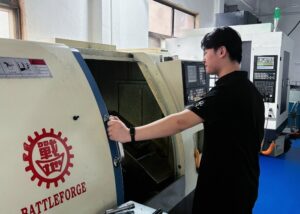
Spindle
The spindle is one of the core components of a CNC lathe, responsible for providing power and driving the workpiece to rotate.
Precision Influence : The precision of the spindle directly affects the machining quality of the workpiece. The spindle speed is usually adjustable, ranging from 1000 to 8000 RPM, and is set according to the machining requirements and workpiece material.
Stability Requirements : The stability of the spindle determines the surface finish of the workpiece and the accuracy that can be achieved during the processing. If the spindle speed is unstable or the vibration is too large, it will affect the surface quality of the final product.
Tailstock
The tailstock is the supporting component of the CNC lathe, which is mainly used to support the other end of the longer workpiece to ensure that the workpiece will not be deformed or offset during processing.
Support Force Adjustment : The tailstock adjusts the support force through the hydraulic system to provide stable processing support.
Stability : For longer workpieces, the stability of the tailstock is particularly important, as it can prevent the vibration of the workpiece and ensure the processing quality. The stability of the tailstock is crucial to dimensional accuracy and processing efficiency.
Tool Holder
The tool holder is the component on the CNC lathe where the cutting tools are installed. It is responsible for automatically replacing different tools as needed, greatly improving the processing efficiency.
Automatic Tool Changing : The tool holder of modern CNC lathes usually adopts a rotating tool holder, and each tool position can accommodate a variety of tools to facilitate different processing operations such as turning, milling, drilling, etc.
Improve Processing Efficiency : The automatic tool changing system of the tool holder reduces manual intervention, saves time, and improves processing accuracy and repeatability. Effective tool holder design can greatly improve production efficiency, especially in mass production.
Lathe Bed
The lathe bed is the basic supporting part of the CNC lathe and provides the stability of the entire equipment.
Material Selection : The bed is usually made of cast iron or high-strength alloy materials to ensure sufficient rigidity and shock resistance.
Stability Requirements : The stability of the bed directly affects the vibration and error during the processing. If the bed design is unreasonable, it may cause unnecessary vibration during the processing and affect the accuracy.
Guide
Guide rails are one of the important components of CNC lathes, used to guide the tool holder and tailstock to move precisely on the lathe bed.
Precision Requirements : The accuracy of the guide rail directly affects the machining accuracy and stability of the CNC lathe. The guide rail must be able to withstand the pressure during the cutting process while maintaining a stable motion path.
Material Selection : Common guide rail materials include carbide steel and high wear-resistant alloy materials, which can provide good friction performance and durability. High-quality guide rails can reduce friction, improve processing accuracy and the service life of machine tools.
By understanding and mastering the key components of CNC lathes and their functions, we can better adjust and maintain the equipment to ensure the efficiency of the processing process and the high precision of the product. The coordination of each component has an important impact on the final processing quality. Therefore, as operators of CNC lathes, we need to continuously optimize and adjust these components to ensure that every detail in the processing process is accurate and correct.
What Types Of CNC Lathes Are There
There are many types of CNC lathes according to the number of axes. Common ones include two-axis, three-axis, four-axis, and five-axis CNC lathes. Different types of CNC lathes are suitable for different processing needs. Understanding the characteristics of different types of CNC lathes can help you choose the most suitable machine tool according to the specific processing task and improve production efficiency and processing quality.
Two-axis CNC Lathe
Two-axis CNC lathes are the most basic type of CNC lathes and are usually used for simpler machining tasks such as external cylindrical machining, turning and drilling.
Basic Functions : Two-axis CNC lathes perform processing on the X-axis and Z- axis . They are suitable for processing parts with symmetrical shapes and can complete basic operations such as external cylindrical processing, drilling, and turning.
Application Areas : This type of machine tool is suitable for mass production of relatively simple parts, such as shaft parts and simple circular parts.
Precision Requirements : The precision of two-axis CNC lathes can generally reach a tolerance range of **±0.05mm**, which is suitable for general precision requirements. Due to its simple structure and low cost, it is usually used for parts with low precision requirements in efficient production.
Three-axis CNC Lathe
The three-axis CNC lathe adds a Y-axis on the basis of the two-axis , which greatly improves its processing capability, enables it to handle more complex geometric shapes, and is suitable for asymmetric processing.
Functional Improvement : After adding the Y-axis on the basis of the two-axis, the three-axis CNC lathe can perform more complex processing tasks, such as processing non-circular parts, combined processing of internal and external circles, and complex turning operations.
Precision And Application : The accuracy of a three-axis lathe can generally reach **±0.02mm**, which is more suitable for the processing of precision parts than a two-axis lathe. It is widely used in the processing of precision parts, automotive accessories and molds.
Asymmetric Processing : Due to the addition of the Y-axis, the three-axis lathe is able to process asymmetric parts, which is very useful in the manufacture of complex parts. It can not only perform simple cutting, but also complete more complex shapes and structures, increasing the flexibility of design and production.
Four-axis CNC Lathe
The four-axis CNC lathe is further expanded on the basis of the three-axis CNC lathe. It adds the function of the C-axis, which significantly improves its processing capacity and accuracy. The addition of the C-axis enables the workpiece and tool to be precisely processed at more angles and positions. Therefore, the four-axis CNC lathe is particularly suitable for complex parts that require multi-angle processing. Through this design, the four-axis lathe can complete the rotation and cutting operations simultaneously in one processing process, greatly improving the processing efficiency and the processing quality of the parts.
The main feature of a four-axis CNC lathe is that it can add a rotating axis C-axis on the basis of the three basic axes X, Y, and Z, making the cooperation between the processing tool and the workpiece more flexible. This allows the four-axis lathe to not only complete traditional turning operations, but also more complex processing tasks such as milling. Especially when parts need to be processed at multiple angles, the four-axis lathe can provide significant advantages. For example, a four-axis CNC lathe can complete cutting tasks in multiple directions, thereby reducing the re-clamping of the workpiece and improving processing accuracy and production efficiency.
The accuracy of a four-axis CNC lathe can usually reach **±0.01mm**, which is suitable for processing parts with high precision requirements. It is widely used in precision machinery, aerospace, automobile manufacturing and other fields, especially for parts with complex shapes and precise structures. For example, in the aerospace field, four-axis lathes are often used to manufacture complex structural parts, which need to be cut at multiple angles at the same time to ensure their high precision and stability.
The four-axis CNC lathe not only improves the diversity of processing, but also effectively reduces processing time and improves production efficiency. Through automated control, the four-axis lathe can produce parts more efficiently and accurately, especially in mass production and high-precision manufacturing tasks, its advantages are more obvious.
Five-axis CNC Lathe
The five-axis CNC lathe is the most advanced type in the field of CNC lathes. It can cut on five axes, X, Y, Z, A, and B, at the same time, greatly improving the accuracy and flexibility of processing. The core advantage of the five-axis CNC lathe is that it can cut in multiple directions, making the processing of parts with complex shapes more efficient and accurate.
The unique feature of a five-axis CNC lathe is that it can perform cutting operations on five axes simultaneously. In addition to the traditional X, Y, and Z axes, it also adds A and B axes, allowing the machining tool to enter the workpiece from multiple directions at the same time. In this way, not only can multiple machining tasks be completed in a single clamping, but the number of clamping times and machining errors can also be greatly reduced when machining complex parts. The accuracy of a five-axis lathe can usually reach **±0.005mm**, which can meet the high requirements of aerospace, medical equipment, precision equipment and other industries for part accuracy and complex shapes.
Five-axis CNC lathes are widely used in aerospace, medical equipment, precision instruments and other fields. In these industries, the complexity of parts and the demand for high precision are very high. Five-axis lathes can complete cutting in multiple directions at the same time in one process, which greatly improves production efficiency and ensures that the size and shape of parts remain consistent. In the medical device industry, five-axis lathes are often used to process precision implants and medical tools, while in the aerospace field, they are used to process complex structural parts and engine parts.
The five-axis CNC lathe represents the highest level of CNC technology. Its high precision and versatility make it an indispensable part of modern manufacturing industry.
Six-axis Or More CNC Lathes
Six-axis and above CNC lathes are the most advanced and complex machine tool types in modern manufacturing, capable of handling extremely complex parts and high-precision machining tasks. These machines have multiple rotating axes and can perform cutting operations in multiple directions simultaneously, greatly improving machining flexibility and precision. They are suitable for machining parts with extremely high precision requirements and complex geometries, especially in high-end industries, where six-axis CNC lathes play a vital role.
CNC lathes with six axes or more can not only perform traditional turning, but also cut in multiple axes simultaneously. By adding multiple rotating axes (such as A axis, B axis, C axis, etc.), these machines can achieve more complex cutting paths and process more precise geometric shapes. Compared with traditional CNC lathes, the accuracy of six-axis CNC lathes can usually reach **±0.002mm**, which far exceeds the processing capabilities of ordinary CNC lathes.
This type of CNC lathe can complete multiple processing tasks in one clamping, greatly reducing the time of moving and re-clamping the workpiece, improving production efficiency, and also reducing the processing errors caused by multiple clamping. In the process of processing complex parts, the six-axis lathe has a higher degree of rotational freedom, which enables it to process parts with more complex shapes and even those parts that are very difficult to process by traditional methods.
Six-axis and above CNC lathes are commonly found in industries that require extremely high precision and complexity, such as aerospace, precision medical equipment, robotic parts and other fields.
Aerospace : Six-axis CNC lathes can process complex aviation components, especially engine parts and aircraft structures, which require extremely high precision and complex geometries.
Precision Medical Devices : In the medical industry, six-axis CNC lathes are often used to process miniature and complex medical device parts, such as implants, surgical tools, etc. These parts require extremely high precision and surface finish.
Robot Parts : With the advancement of robot technology, six-axis CNC lathes are widely used to manufacture robot parts, which usually have complex structures and geometric shapes and require very high processing accuracy.
The importance of six-axis and above CNC lathes in these fields is self-evident. They not only improve production efficiency, but also ensure high precision and high quality of parts. Their powerful processing capabilities make them indispensable high-end equipment in modern manufacturing.
What Is The Difference Between A Horizontal CNC Lathe And A Vertical CNC Lathe
The main difference between horizontal CNC lathes and vertical CNC lathes is the layout of the spindle and the type of workpieces they are suitable for. Choosing the right type of CNC lathe directly affects the efficiency, precision and final quality of the machining process. Understanding the characteristics of these two types of CNC lathes can help us choose the most suitable equipment according to different production needs, improve machining efficiency and part quality.
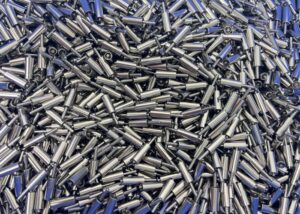
Spindle Layout And Applicable Workpiece Types
First of all, the main difference between horizontal CNC lathes and vertical CNC lathes is the layout of the spindle .
Horizontal CNC Lathe : The spindle is placed horizontally, which is suitable for processing long and heavy workpieces. Due to the horizontal placement of the spindle, the workpiece can be better stabilized on the lathe, especially when processing long workpieces, it can provide stronger support and stability. At the same time, horizontal CNC lathes usually have better chip removal effects, reducing processing interference caused by chip accumulation during processing.
Vertical CNC Lathe : The spindle is placed vertically, which is suitable for short and heavy workpieces. Due to the layout of the vertical spindle, the vertical lathe provides a better processing field of view and operating space, especially when small parts need to be precisely operated, which can effectively improve the convenience and visibility of operation.
Processing Capability And Applicability
Horizontal CNC Lathes : Suitable for processing longer and heavier workpieces, especially in tasks that require a longer processing time, horizontal CNC lathes can provide stronger stability and avoid processing errors caused by too long workpieces. They are widely used in the manufacture of large parts, such as engine parts, large mechanical parts, etc.
Vertical CNC Lathe : Suitable for processing short workpieces, especially those that require high precision and delicate operation. Vertical CNC lathes are commonly used in the manufacture of precision parts, such as electronic parts, automotive parts, etc. During processing, the workpiece is placed directly on the bed, and the operator can more easily control every detail of the processing process.
Processing Accuracy And Operating Efficiency
Horizontal CNC Lathe : Due to its good stability and strong support capacity, the horizontal CNC lathe can maintain high processing accuracy under high load and long processing time. Its high stability and excellent chip removal function enable it to efficiently process larger and complex workpieces.
Vertical CNC Lathe : The processing accuracy of the vertical lathe is also very high, especially when processing small workpieces, the vertical lathe can provide a more delicate operating space. When high-precision processing and strict control of part size are required, the vertical CNC lathe is an ideal choice.
By understanding the different characteristics of horizontal and vertical CNC lathes, we can make reasonable choices based on actual processing needs. Horizontal CNC lathes are suitable for processing long and heavy workpieces, providing better stability and chip removal effects; while vertical CNC lathes are suitable for precision processing of short workpieces, providing better operating vision and flexibility. Choosing a suitable CNC lathe can not only improve processing efficiency, but also ensure the processing accuracy of parts, providing guarantee for the efficient operation of modern manufacturing industry.
What Operations Can Be Performed On A CNC Lathe
CNC lathe is a high-precision processing equipment that can perform a variety of complex processing operations. These operations are not limited to traditional turning, but also include drilling, boring, tapping, milling and other functions, which greatly improves the efficiency and accuracy of processing. With its precise numerical control system, CNC lathe can adjust parameters according to processing requirements to achieve efficient manufacturing of multi-process and complex parts.
Turning
Turning is one of the most basic operations of CNC lathes, mainly used for processing external circles, internal circles, end faces, etc.
External Turning : Removing excess material from the outer diameter of the workpiece through a cutting tool, usually used to manufacture shaft parts, annular parts, etc.
Internal Turning : Mainly used for machining circular apertures inside workpieces, such as bearing seats, pipes, etc.
The accuracy of turning operations can usually reach **±0.01mm**, and high-precision external or internal machining can be completed in a relatively short time.
Drilling
CNC lathes can perform high-precision drilling operations and are often used to produce parts with various hole diameters.
Drilling Accuracy : CNC lathes can accurately position the drill bit through program control to ensure that the size and position of the hole meet the design requirements. The accuracy of the drilling operation can generally reach **±0.005mm**, which is suitable for the production of precision parts.
Hole Depth And Diameter : The depth and diameter of the drill bit can be adjusted according to processing requirements to achieve complex hole processing.
Boring
Boring operations are often used to enlarge the size of an existing hole to achieve a higher degree of dimensional accuracy and surface finish.
Precision Requirements : The boring operation can control the size accuracy of the hole to about **±0.002mm**, which is suitable for processing parts with high requirements for hole diameter accuracy.
Application Scenarios : Commonly used in the processing of large holes and high-precision holes in shaft parts and mechanical structural parts.
Tapping
Tapping operation is used to machine internal threads on the surface of a workpiece, and is common on parts that require high thread accuracy and surface finish.
Precision Control : Tapping operations can usually achieve an accuracy of **±0.01mm**, which is suitable for the production of high-precision threads.
Widely Used : Tapping is widely used in the processing of parts that require threaded connections, such as nuts, bolts, etc.
Milling
Some CNC lathes also have milling functions and can perform cutting operations, which are suitable for more complex parts processing.
Multi-Process Machining : Milling operations can be combined with turning to complete multiple machining operations on the same machine tool, reducing the transfer time of the workpiece during the machining process.
Scope Of Application : Suitable for parts with complex shapes, such as milling slots, planes, grooves, etc., with an accuracy of **±0.005mm**.
Other Operations
In addition to conventional turning, drilling, boring, tapping and milling, CNC lathes can also perform a variety of other operations, such as cutting, trimming, marking, etc., which can be flexibly configured according to the design requirements of the workpiece.
What Software Is Used For CNC Lathe Programming And Processing
The programming and processing of CNC lathes require the help of CAD/CAM software to achieve a seamless connection between the design and processing process. Use CAD (computer-aided design) software to create the design drawings of the parts, and then use CAM (computer-aided manufacturing) software to convert the design into G-code to drive the CNC lathe to perform cutting tasks. Different CAD/CAM software provides different functions, which can effectively improve programming efficiency and processing accuracy.
Commonly used CAD/CAM software includes SolidWorks, Fusion 360, etc. The following are several common CNC lathe programming and processing software:
| Software Title | type | Key Features |
| SolidWorks | CAD/CAM | 3D modeling and part design, generate G-code for processing |
| Fusion 360 | CAD/CAM | Provide integrated solutions for design, simulation, milling, turning, etc. |
| Mastercam | CAM | Powerful toolpath generation and G-code generation tools for complex machining tasks |
| GibbsCAM | CAM | Focus on programming simplicity, supporting all types of machining tasks (turning, milling, etc.) |
| AutoCAD | CAD | Commonly used for 2D and 3D design, converted to G-code for processing |
These software can help CNC lathes perform machining tasks accurately and efficiently, while ensuring the accuracy and consistency of product design and manufacturing processes.
Price And Service Life Of CNC Lathe
The price of CNC lathes usually ranges from **$20,000 to $500,000**, depending on the model, features, precision and additional options of the machine. Lower-priced CNC lathes are generally suitable for basic machining tasks, have fewer features and lower precision requirements, and are suitable for small businesses or low-load production environments. High-end CNC lathes are equipped with more features, precision control systems and stronger machining capabilities, suitable for large enterprises and high-end applications.
CNC Lathes
usually cost between **$20,000 and $60,000. They are suitable for simple turning tasks, such as basic external cylindrical machining, drilling, etc. The accuracy of such equipment is usually ±0.05mm**, which is suitable for relatively simple parts processing.
Mid-Range
CNC lathes are priced between $60,000 and $150,000 . These machines have high machining accuracy and automation functions, and can complete more complex machining tasks, such as internal and external circle machining, thread cutting, and partial milling operations. The accuracy can generally reach ±0.02mm, and they are widely used in medium-sized production enterprises.
High-End CNC
lathes are usually priced between **$150,000 and $500,000. These lathes have more axes, automation systems, and complex machining functions, and are suitable for machining parts with complex shapes and high precision requirements. They are widely used in high-end manufacturing fields such as aerospace, automobile manufacturing, and medical equipment. The accuracy can reach ±0.005mm**, and they can complete multiple machining tasks in one process.
The Service Life Of CNC Lathe
The service life of a CNC lathe is generally 10 to 15 years , but this data is not fixed. The actual service life is affected by the frequency of use of the equipment, maintenance status and working environment. Through proper maintenance and care, the service life of a CNC lathe can be significantly extended, even beyond 15 years.
High Frequency Use
For high frequency and high load CNC lathes, their parts will experience higher wear, resulting in a shortened equipment life. In some high production load environments, CNC lathes may require more frequent maintenance and replacement of parts, especially spindles, tools, guide rails and other parts.
Low Frequency Use
If the CNC lathe is used less frequently and in a good operating environment, the service life of the equipment can usually be extended. The equipment maintains a low load for a long time, which will not cause excessive pressure on the machine tool, so it can maintain good performance for a longer time.
The Impact Of Maintenance On Life
The maintenance of CNC lathes is crucial to their service life. Regular lubrication, cleaning, maintenance and parts replacement are the key to extending the life of the equipment. Without proper maintenance, the frequency of failures will increase, the accuracy of the equipment will gradually decrease, and eventually the equipment will be scrapped prematurely.
Comprehensive Consideration Of Price And Service Life
From price to service life, the investment in CNC lathes is a long-term decision. When purchasing, in addition to considering the initial investment in the equipment, you also need to consider the equipment’s work efficiency, production needs, and subsequent maintenance costs.
| Device Type | Price Range | Service life | Main Features |
| Entry-level CNC lathe | $20,000 – $60,000 | About 10 years | Simple processing, suitable for low-load production, average precision |
| Mid-range CNC lathe | $60,000 – $150,000 | About 12 years | High precision, suitable for medium-sized production enterprises, capable of complex processing tasks |
| High-end CNC lathe | $150,000 – $500,000 | 15 years and above | High precision, multifunctional, suitable for high-end fields such as aviation, medical, and automobile |
The price and service life of CNC lathes are important factors that affect the production decisions of enterprises. High-end equipment is more expensive, but it can provide higher precision and longer service life. For most companies, choosing the right CNC lathe type according to the complexity of the processing task and production needs can maximize the investment benefits. While ensuring efficient production, the service life of the equipment can be extended through reasonable maintenance, ultimately achieving lower long-term operating costs.
What Is The Difference Between A CNC Lathe And A Regular Lathe
The biggest difference between CNC lathes and ordinary lathes is the control system. CNC lathes use computer numerical control systems (CNC) to control the movement of tools and workpieces through programs, and can perform high-precision cutting and complex operations. Ordinary lathes rely on manual operation, with relatively primitive control methods, and relatively low precision and efficiency. CNC lathes can complete some complex operations that traditional manual lathes cannot achieve, improving production efficiency and parts processing quality.
The following are the main differences between CNC lathes and ordinary lathes:
| Features | CNC Lathe | Regular Lathe |
| Control method | Computer numerical control, automated operation | Manual operation, relying on operator control |
| Accuracy | High precision, usually up to **±0.005mm** | The accuracy is relatively low, usually ±0.05mm |
| Difficulty of operation | Just input the program and complete the processing automatically | Manual adjustment by skilled operators is required |
| Applicable complexity | Can perform complex cutting, turning, milling, drilling and other operations | Mainly used for simple turning, drilling and external cylindrical machining |
| Production efficiency | High efficiency, reduces manual intervention, suitable for mass production | Low production efficiency, especially for complex processing |
| Multi-step processing | Multiple operations can be completed in the same clamping | Requires frequent re-clamping and adjustment |
| Processing flexibility | High, enabling multi-axis operation and complex geometry processing | Limited by manual operation, poor flexibility |
| Maintenance and cost | The initial investment is high, but the subsequent maintenance is relatively simple | Low initial investment, but requires more frequent manual maintenance |
Application Areas Of CNC Lathes
As the core equipment in modern manufacturing, CNC lathes are widely used in many industries due to their high precision and high efficiency. They can produce precision parts that meet high standards and are especially suitable for mass production and processing of parts with complex shapes. Whether it is the automotive, aviation, medical equipment or electronics industry, CNC lathes play a vital role in them.
Application Areas
Industry
are widely used in the manufacture of parts, such as engine parts, axles, brake discs, etc. These parts usually require high-precision and complex processing technology. CNC lathes can provide **±0.01mm** accuracy to ensure the accuracy of part size and shape, meeting the automotive industry’s strict requirements for quality and performance.
The Aerospace
field, CNC lathes are used to manufacture aircraft engine parts, fuselage parts, and spacecraft parts. Due to the complex structure and special materials of these parts, extremely high processing accuracy and surface quality are required. The multi-axis processing function of CNC lathes enables it to cut in multiple directions at the same time, perfectly meeting the needs of the aerospace field.
Medical Equipment
CNC lathes also play an important role in the production of medical equipment, especially in the manufacture of precision medical devices and implants. For example, scalpels, medical screws, artificial joints and other parts all require high-precision processing. CNC lathes can ensure that the dimensional tolerance of parts is within **±0.005mm**, ensuring the reliability and safety of medical equipment.
Electronics Industry
The electronics industry has very high requirements for the precision and surface quality of parts, especially mobile phone housings, connectors, electronic components, etc. CNC lathes can efficiently cut metals, plastics and other materials, provide high-precision processing capabilities, and meet the needs of electronic products for part quality and processing speed.
CNC lathes are widely used in many industries through their powerful processing capabilities, providing reliable solutions for the manufacture of high-precision and complex parts in different industries. In the fields of automobiles, aerospace, medical equipment, electronics, etc., CNC lathes not only improve production efficiency, but also ensure the high quality and high precision of parts, and promote the progress and development of related industry technologies.
FAQs
What Is A CNC Lathe?
A CNC Lathe is a precision machine tool that uses computer numerical control (CNC) to automate the turning process. It rotates the workpiece while a fixed cutting tool removes material, allowing for high-precision machining of parts like shafts, pipes, and cylinders. Typically, CNC lathes achieve precision of ±0.005mm and are used in automotive, aerospace, and medical industries for producing complex, symmetrical components.
What Is The Difference Between A CNC Lathe And A Regular Lathe?
The key difference between a CNC lathe and a regular lathe lies in the control system. A CNC lathe is controlled by computer programming, which allows for high precision and automation in operations. In contrast, a regular lathe is operated manually, relying on the operator to control the machine’s movements. CNC lathes offer ±0.005mm precision, whereas regular lathes typically provide lower accuracy.
What Is A CNC Machine Used For?
A CNC machine is used for precision manufacturing, where it automates various cutting, milling, drilling, and turning processes. CNC machines are widely used across multiple industries, including automotive, aerospace, electronics, and medical devices, to produce complex and high-precision parts. The accuracy of CNC machines can reach ±0.001mm, making them essential for producing parts with tight tolerances.
What Is The Aim Of CNC Machine?
The primary aim of a CNC machine is to increase efficiency, precision, and consistency in the manufacturing process. By using computer programs, CNC machines can automatically perform tasks such as cutting, drilling, and turning, while maintaining consistent quality. These machines improve production speed and reduce errors, achieving precision levels of ±0.001mm to ensure the final product meets strict specifications.
What Is The Difference Between CNC Machining And CNC Turning?
CNC machining refers to a broad category of manufacturing processes that use computer-controlled machines to perform operations like milling, drilling, and cutting. CNC turning, on the other hand, is a specific type of CNC machining that involves rotating the workpiece while a stationary tool cuts into it. CNC turning is primarily used for producing symmetrical parts like shafts, and its precision typically reaches ±0.005mm.
Conclusion
CNC lathes play an important role in many industries, meeting the needs of complex parts processing with high precision, high efficiency and automation. From automobiles to aviation, medical and electronics industries, CNC lathes not only improve production efficiency, but also ensure high precision and quality of parts. With the continuous advancement of technology, CNC lathes will be used in more fields, driving the manufacturing industry to develop in the direction of higher precision and efficiency.


